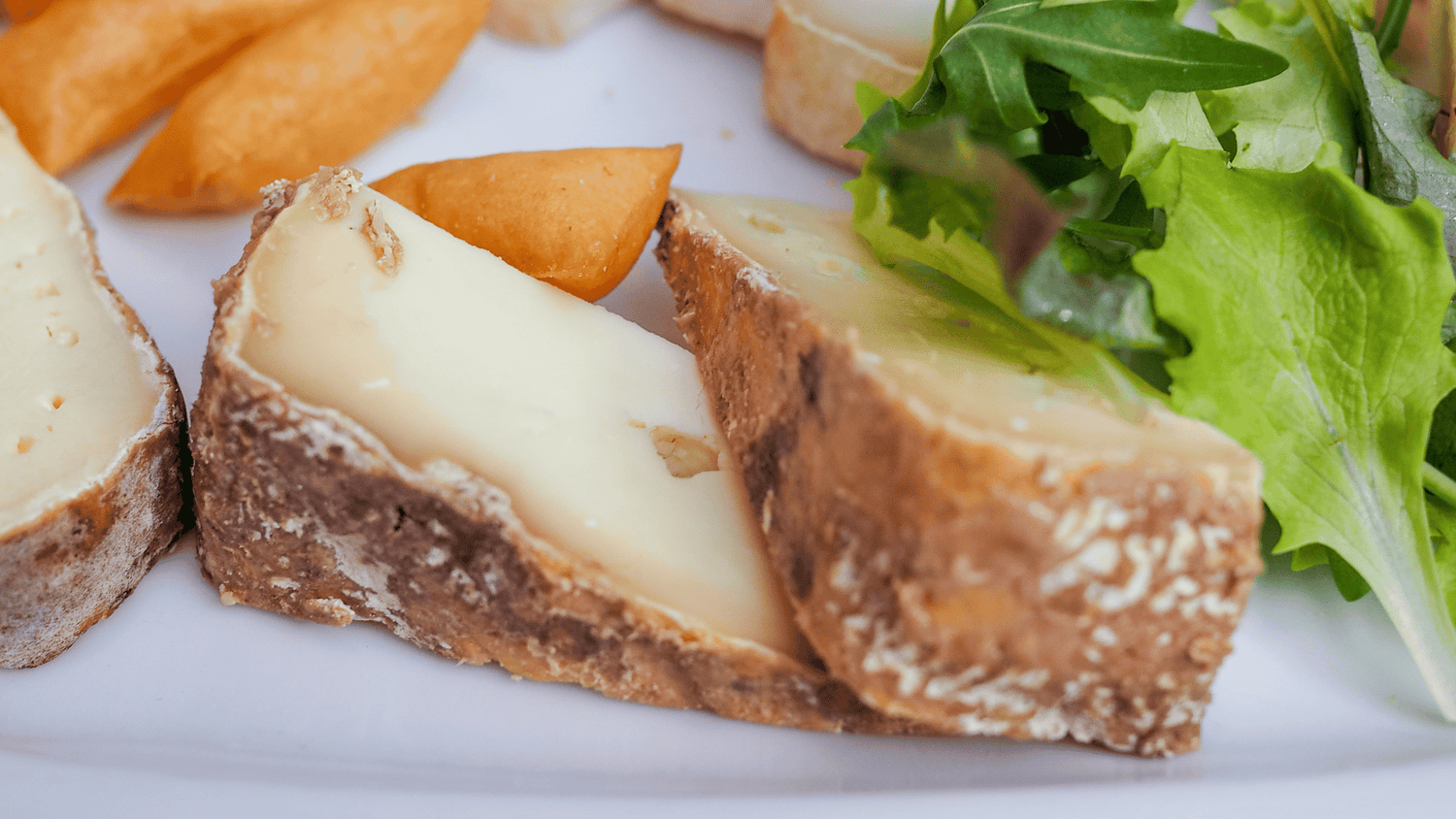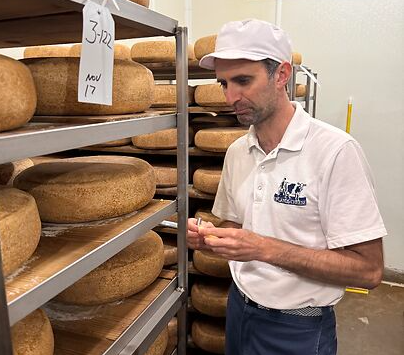Building a cheese selection can be an immensely rewarding and pleasurable pursuit, combining the exploration of diverse flavors with the joy of savoring artisanal craftsmanship. Whether you’re new to the world of cheese or an experienced connoisseur looking to expand your collection, curating a selection of cheeses that suits your palate and enhances your culinary experiences is both an art and a science. At Capella Cheese, we offer a range of exceptional cheeses through our Cheese of the Month subscription and various collections that can help you build a diverse and exciting cheese portfolio. This comprehensive guide provides detailed advice on how to build a cheese selection that reflects your tastes, elevates your dining experiences, and impresses your guests.
Understanding Different Types of Cheeses
To build a well-rounded cheese collection, it's crucial to understand the different types of cheeses and their characteristics. Cheese can be categorized by texture, flavor, and aging process, and each type offers unique attributes:
- Soft Cheeses: These cheeses have a creamy texture and are often characterized by a bloomy or washed rind. Examples include Brie and Camembert. Soft cheeses are known for their rich, buttery flavors and melt-in-your-mouth texture. They are ideal for spreading on bread or pairing with fruits and nuts.
- Semi-Hard Cheeses: Semi-hard cheeses have a firmer texture but still retain some moisture. Varieties like Gouda and Gruyère fall into this category. These cheeses can range from mild and nutty to more robust flavors. They are versatile for cooking, snacking, and melting.
- Hard Cheeses: Aged for longer periods, hard cheeses such as Parmesan and a well-aged Pecorino develop intense flavors and a crumbly texture. Hard cheeses are excellent for grating over dishes, adding depth to soups, or enjoying on their own.
- Blue Cheeses: Blue cheeses, including Roquefort and Gorgonzola, are known for their distinctive blue veins and strong flavors. These cheeses are typically tangy and creamy, and they pair well with sweet accompaniments like honey or fruit.

Starting with a Balanced Selection
When beginning your cheese collection, aim for a selection that encompasses a variety of textures and flavors. This diversity allows you to experience different cheese profiles and discover your preferences. Consider starting with the following:
- A Soft Cheese: Choose a creamy cheese like Brie for its smooth texture and mild flavor. It pairs well with fruits, nuts, and crusty bread. Camembert is another excellent choice if you enjoy a more earthy flavor. Triple Creams are also popular option with their ultra-creamy, smooth texture and luxurious buttery taste.
- A Semi-Hard Cheese: Gouda is a versatile option that can be enjoyed on its own or used in cooking. Its balanced flavor works well with a range of accompaniments, from apples to ham. Washed rind cheeses like Taleggio give a delightful combination of creamy texture, distinctive aroma, and mild yet complex flavor that pairs well with fruit, nuts, and even sweet preserves.
- A Hard Cheese: Parmesan is perfect for grating over pasta dishes, soups, or salads. Its nutty and savory flavor enhances many recipes, and its long aging process contributes to its complexity.
- A Blue Cheese: Roquefort adds a bold, tangy flavor to your collection. It pairs beautifully with honey, pears, or as a flavorful addition to salads. For a milder blue, consider Gorgonzola.
Exploring Different Regions
Cheese-making traditions vary widely across the globe, and each region produces cheeses with unique characteristics. To build a diverse and exciting collection, explore cheeses from different regions:
- France: French cheeses offer a rich variety of flavors and textures. From creamy fresh Chevre to Comte, France is known for its diverse cheese-making heritage. French cheeses often reflect the region’s terroir and traditional techniques, making them a fascinating addition to any collection.
- Italy: Italian cheeses such as Taleggio and Robiola are celebrated for their rich flavors and versatility. Italian cheese-making is deeply rooted in history and regional diversity, offering a range of options from nutty and savory to creamy and tangy.
- Switzerland: Swiss cheeses like Gruyère are renowned for their nutty and creamy flavors. Swiss cheese-making traditions emphasize quality and precision, producing cheeses that are perfect for melting or enjoying on their own.
- Spain: Spanish cheeses such as Manchego offer a unique taste profile, ranging from mild and buttery to sharp and tangy. Spanish cheeses often feature rich flavors that pair well with a variety of accompaniments.
Considering Aging and Pairing
The aging process of cheese significantly impacts its flavor and texture. Different cheeses can be categorized based on their aging:
- Young Cheeses: Fresh cheeses like Mozzarella have a mild flavor and a soft texture. These cheeses are ideal for salads, sandwiches, and pizzas.
- Aged Cheeses: Aged cheeses such as Parmesan and Aged Gouda develop more complex flavors and a firmer texture. They are great for grating over dishes or enjoying with a glass of wine. Aged cheeses often have more pronounced flavors and can add depth to recipes.
- Pairing: Experiment with different pairings to find what you enjoy best. Brie pairs well with apples and a light white wine, while Blue Cheese complements sweet wines, honey, and fruits like figs and pears. Pairing cheese with the right accompaniments can enhance its flavors and create a well-rounded tasting experience.

Investing in Quality Storage
Proper storage is crucial for maintaining the quality of your cheese collection. Here are some tips for storing cheese:
- Refrigeration: Most cheeses should be kept in the refrigerator. Use parchment paper or wax paper to wrap cheese, and then place it in an airtight container to prevent it from drying out. Avoid using plastic wrap directly on the cheese, as it can affect the texture and flavor.
- Cheese Drawer: If your refrigerator has a dedicated cheese drawer, use it to keep cheeses at the right humidity level. Cheese drawers are designed to maintain the proper environment for cheese storage.
- Avoid Freezing: Freezing cheese can alter its texture and flavor. Purchase cheese in quantities that you can consume within a reasonable time. Cheese should never be frozen as it destroys the cheese.
Expanding Your Collection Over Time
Building a cheese collection is an ongoing process. As you gain more experience and discover new favorites, you can continue to expand your collection. Consider joining Capella Cheese’s Cheese Club to receive a curated selection of cheeses each month. This subscription service can help you explore new varieties and refine your collection by introducing you to high-quality, artisanal cheeses from around the world.
Trying Seasonal and Limited-Edition Cheeses
Seasonal and limited-edition cheeses offer unique flavors and experiences that can add excitement to your collection. Capella Cheese’s Monthly Cheese Box often features seasonal cheeses that reflect the best of what’s available throughout the year. These cheeses can introduce you to new flavors and textures that are only available for a limited time.
Seasonal cheeses often highlight the best ingredients of the time of year and can provide a fresh perspective on your collection. For example, a cheese made from summer milk might have different flavor notes compared to a cheese made in winter.
Learning from Experts
Learning from cheese experts can greatly enhance your cheese journey. Attend cheese tastings, visit cheese shops, and engage with cheese communities to gain insights and recommendations. At Capella Cheese, we are passionate about cheese and offer resources and guidance through our Monthly Cheese Box and Cheese Club to help you discover and appreciate artisanal cheeses.
Cheese experts can provide valuable information about cheese-making processes, regional cheese varieties, and pairing suggestions. Engaging with experts and enthusiasts can also expose you to new cheeses and ideas that you might not have encountered otherwise.

Experimenting and Having Fun
Building a cheese collection should be an enjoyable and exploratory process. Don’t hesitate to experiment with different cheeses, pairings, and recipes. The more you explore, the more you’ll discover about your personal preferences and the vast world of cheese. Trying new cheeses and combinations can lead to delightful surprises and enhance your appreciation for artisanal craftsmanship.
Consider creating cheese boards with a variety of cheeses, fruits, nuts, and spreads to explore different flavor combinations. Hosting tasting events with friends and family can also provide opportunities to share your collection and receive feedback on new discoveries.
Hosting Cheese Tasting Events
One of the most enjoyable ways to expand your cheese collection and share your passion is by hosting cheese-tasting events. Here’s how to plan a successful cheese tasting:
- Select a Theme: Choose a theme for your tasting, such as cheeses from a specific region, a comparison of soft vs. hard cheeses, or seasonal selections from Capella Cheese’s Monthly Cheese Box. A theme can guide your cheese selection and create a cohesive tasting experience.
- Prepare Pairings: Offer a variety of accompaniments, such as fresh fruits, nuts, artisanal breads, and wines. These pairings enhance the flavors of the cheeses and provide a well-rounded tasting experience. Consider including items like olives, pickles, and charcuterie to complement the cheese selection.
- Provide Information: Share information about each cheese, including its origin, aging process, and flavor profile. This adds educational value to the tasting and helps guests appreciate the nuances of each cheese. You can also provide tasting notes or a cheese booklet with details about the cheeses being sampled.
- Encourage Exploration: Allow guests to sample and compare different cheeses, and encourage them to note their favorites. This interactive approach can lead to interesting discussions and discoveries. Provide plenty of space for guests to move around and sample the cheeses at their own pace.
Documenting Your Collection
Keeping track of your cheese collection can help you remember your favorites and plan future purchases. Consider creating a cheese journal to record details about each cheese, including its name, origin, flavor profile, and pairing suggestions. This documentation can serve as a valuable reference for future cheese selections and pairings.
A cheese journal can also include notes on the tasting experiences, recipes that use specific cheeses, and feedback from friends and family. This personalized record can help you refine your collection and discover new favorites.

Embracing the Journey
Building a cheese collection is not just about acquiring cheeses; it’s about embracing the journey of discovery and enjoying the pleasures of artisanal craftsmanship. Each cheese tells a story, reflecting the traditions, techniques, and flavors of its region. As you build your collection, take the time to savor each cheese and appreciate the artistry involved in its creation.
At Capella Cheese, we are dedicated to providing exceptional cheeses that reflect the finest in artisanal craftsmanship. Our Monthly Cheese Box and Cheese Club offer curated selections that can help you build a diverse and exciting cheese collection. Whether you’re just starting or looking to refine your selection, our offerings provide an opportunity to explore and enjoy a wide range of cheeses.
The journey of building your cheese collection is one of exploration and enjoyment. Each cheese you add brings new flavors, textures, and stories to your collection. Embrace the adventure, savor the experiences, and celebrate the art of cheese-making with Capella Cheese as your guide. Explore, taste, and discover the endless possibilities of cheese, and let your collection reflect your personal journey through the world of artisanal cheeses.




Leave a comment
This site is protected by hCaptcha and the hCaptcha Privacy Policy and Terms of Service apply.